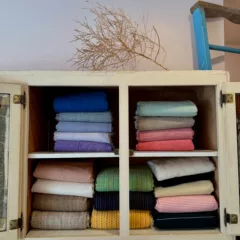Filthy Rich at the Galleries at Moore surveys the sculptures, photographs, performances, and videos made by a handful of artists and others in residence over the last few years at the waste recycling and salvaging center Revolution Recovery, located in the Holmesburg neighborhood of Northeast Philadelphia.
The exhibit, which includes billboard-sized “ruin porn” photos of the recycling plant, celebrates the site itself as well as the RAIR (Recycled Artist in Residence) artists’ transformational art, made from the eerie and frankly morbid found materials plucked from the 350 tons of junk that land at the facility every day.
RAIR is a unique Philadelphia nonprofit artists’ residency. Picture it–artists roaming among excavators, front-end loaders, fork- and scissor- lifts, scavenging through an unimaginable assortment of stuff, from construction and demolition refuse to the intimate, sometimes heartbreaking remnants of broken or lost households–the remains of lives.
Descendants of trash pickers and connoisseurs of the found object, wearing overalls and hard hats, and “interrupting the waste stream,” the RAIR artists turn trash into artwork of one sort or another, and challenge our perceptions of the discarded.
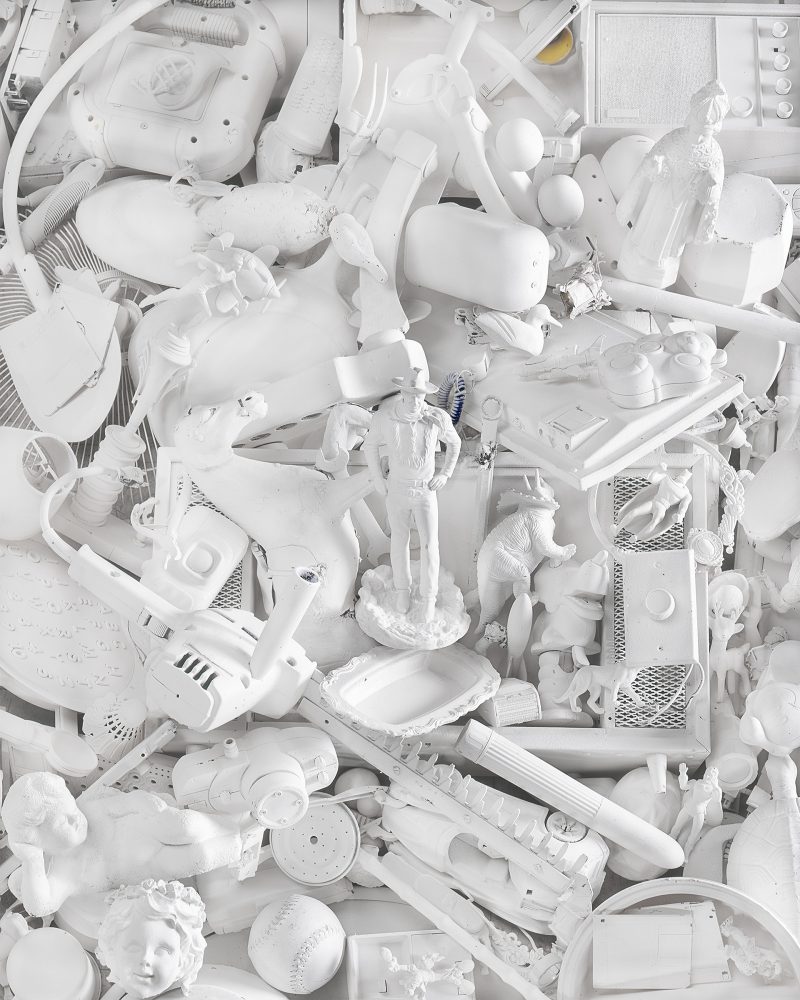
Honoring the lost and discarded
Jaime Alvarez, one of RAIR’s 2016 artist residents, told me that he searched the yard for domestic objects that represented victory, heroism, masculinity, religion, and private sexual objects. In his color photograph, “Leavings 1 (hero),” you see what he amassed. That’s a vibrator in the forefront of the piece, which also includes a John Wayne figurine, kitchen utensils, auto parts, radio parts, trophies, toy cars, sports equipment, pots, pans, coolers, and don’t overlook the little angel. Alvarez painted the objects white, arranged and photographed them as a kind of trash jumble. “I wonder whether the white represents a sterilizing deep freeze, creating an immaculate time capsule, like a petroglyph, its color, the life, removed, but suggested by a subtle hint of yellow in a cylindrical object near the top, partly obscured, and a dash of lovely blue in the middle, which escaped the white paint treatment.
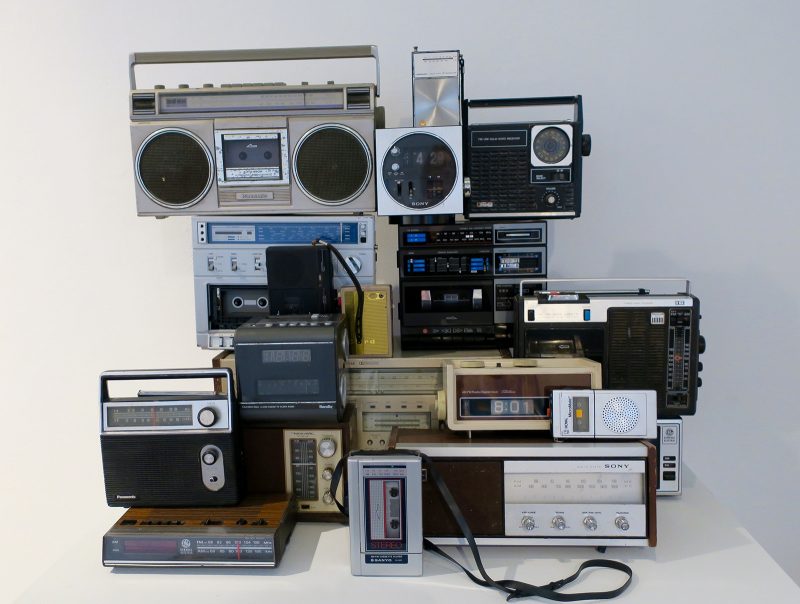
Another aggregation, this time sculptural, not photographic, is Christina P. Day’s “Frequencies,” a collection of found and mostly obsolete radios–boom boxes, transistor radios, Walkmen, clock radios. Day, a 2014 RAIR resident artist, felt honored to make “broken material, dormant in its state, wake back up and blink,” to give it new life.
It’s funny how radios have been disappearing from our homes, and now they have become relics, consigned to the automobile. When I was a kid, I’d lie in bed at night and listen to New York Yankee games on the radio. I can almost hear the voice of Mel Allen, the famous Yankee announcer, emanating from Day’s installation. Today, kids lie in bed with their smart phones, and you can pretty much imagine how they’re using them. I guarantee you they’re not listening to the radio. By way of “waking up” old technology, I’ve been advised to keep a battery operated radio in the emergency kit I keep not putting together for the day the grid goes down.
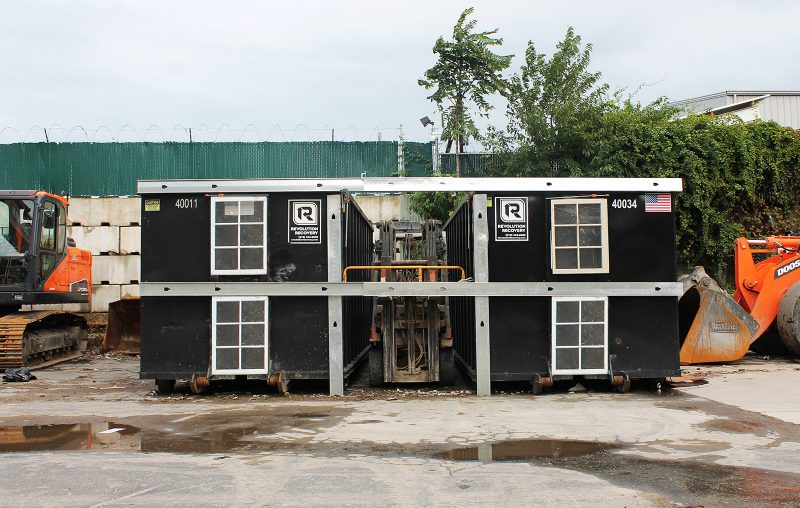
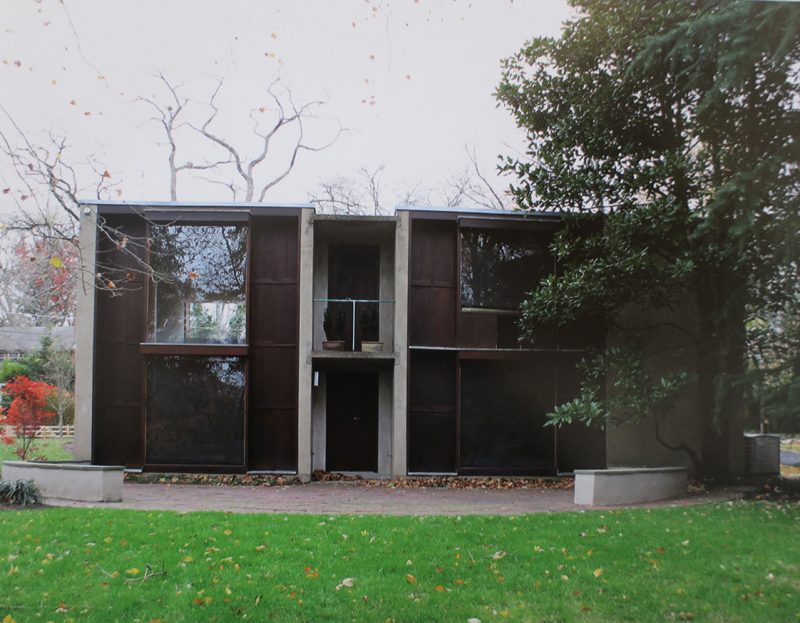
Recreating the iconic architecture of Philadelphia
A significant portion of Filthy Rich is devoted to photographs of RAIR resident artist Ana Peñalba’s “Philli,” in which, with the aid of heavy equipment, the artist (also an architectural designer) reproduced rough sculptural versions of iconic Philadelphia architecture using construction waste materials–the Pennsylvania Academy of Fine Arts, Rodin Museum, Robert Venturi’s Guild House, and Louis Kahn’s Margaret Esherick House in Chestnut Hill. Peñalba’s models were weekend projects about the difference between architecture and sculpture–they were constructed, photographed, and then dismantled pretty much right after they were completed, like performance pieces or mayflies.
I should add that Peñalba’s project also is an example of the delightful and entertaining lightheartedness that RAIR brings to many of its projects, which of course well serves its educational mission.
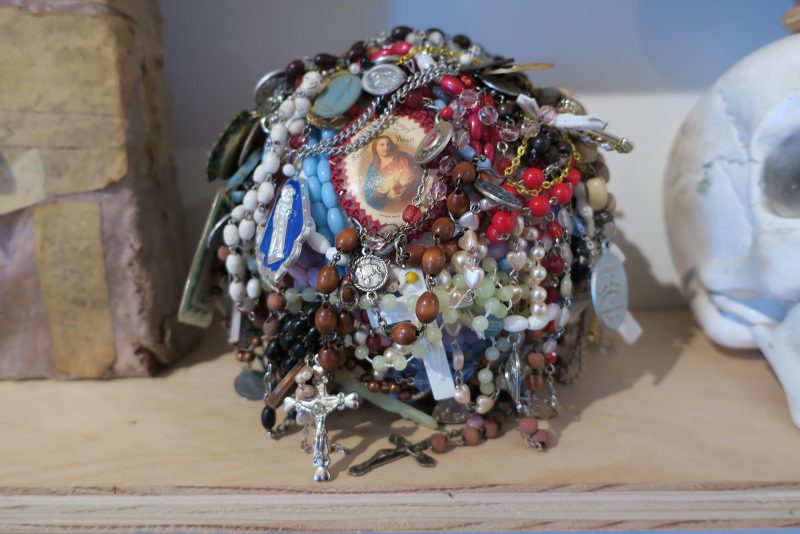
The Brain Room
As part of Filthy Rich, co-curators Billy Blaise Dufala, who serves as RAIR’s Director of Residencies, and Lucia Thomé, Director of Special Projects, have created a replica (perhaps more accurately an organized version) of their office at the facility, which they call The Brain Room. The Brain Room is filled with a magnificent array of objects they’ve collected over the years. I couldn’t even begin to catalogue them. There’s a small handwritten proposal of marriage, newspaper classics like MAN WALKS ON MOON and KENNEDY SHOT TO DEATH, an array of balls, including one constructed of Rosary beads, a display of tools resembling futuristic handguns, like Claes Oldenburg’s “Ray Guns.” Visiting the Brain Room you get a sense of the staggering variety of stuff that lands at Revolution Recovery.
In addition to residencies, RAIR, which was founded by Fern Gookin and Billy Blaise Dufala in 2010, and has received funding from, among others, the Pew Center for Arts & Heritage, works with other local artists, schools, and community organizations on special projects that involve designing and building things like park tables and benches, signage, shelving, and theater sets–all using materials taken from the trash.
If there’s a message here it’s that we are rich. But we are also filthy. And we are passing on to our children an environment polluted by our filthy riches.
In addition to the artists mentioned above, RAIR: Filthy Rich includes contributions by Mariel Capanna, Mary Ellen Caroll, The Dufala Brothers, Tim Eads, Jesse Harrod, Gabe Michael Kenney, J. Louise Makary, Martha McDonald, Monument Lab, Theo Mullen, Matt Neff, Francesca Pfister, Lauren Ruth, Traction Company, Jeff Williams, and Bryan Zanisnik.
RAIR: Filthy Rich is on display at The Galleries at Moore through March 11, 2017. Also on view are Mark Stockton: Independents(s) and Paper Giants.





